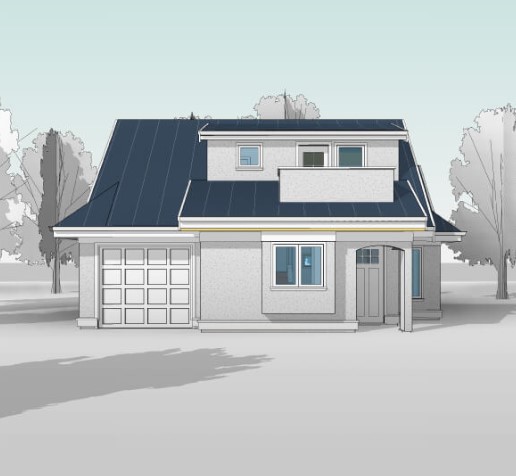

A laneway house is a small, detached residential structure located on the same lot as an existing single-family home. These houses are typically built facing the rear laneway, alley, or secondary road. Laneway houses are gaining popularity as a form of housing in urban areas, providing additional living space while maximizing land use. They offer a compact living solution that can accommodate different needs, such as housing extended family members or generating rental income. The design of laneway houses often emphasizes efficient use of space and sustainable building practices.
What are the benefits of having a laneway house?
Increased housing supply
Additional rental income
Flexible living arrangements
Enhanced property value
Efficient land use
Reduced urban sprawl
Improved community density
Potential for multi-generational living
Opportunity for creative design
The Requirement to build a laneway house:
Zoning Designation:
Your property must be located in a residential zone that allows for the construction of laneway homes.
City Specifics:
Regulations differ by municipality, so it’s essential to review your local city’s bylaws, such as the City of Vancouver’s Zoning and Development By-law.
Design and Layout
Setbacks: There are specific setback distances required from the property line, the main house, and the laneway.
Height Restrictions: Laneway houses usually have restrictions on their maximum height.
Floor Area: The total floor area is often limited to a percentage of the lot area.
Parking: Parking spaces are required for both the main house and the laneway home.
Emergency Access:
You must ensure a clear pathway from the street to the laneway house entrance for emergency services.
Site Eligibility
Primary Home: Your property must include a primary single-family detached home.
Lot Size: The lot must meet a minimum width requirement.
Lane Access: Your lot must have access to a rear lane or alley to build the laneway home.
Cost-Saving Tips to Build a Laneway House:
To build a laneway house cost-effectively, simplify the design, choose affordable materials such as fiber cement or vinyl, opt for energy-efficient features for long-term savings, incorporate multi-functional spaces into the layout, and collaborate with experienced builders to avoid costly mistakes.
Design & Planning
Simplify the design:
A simple and practical layout needs fewer materials and less labor, which helps to reduce costs.
Plan for multi-functional spaces:
Design rooms that serve multiple purposes, such as combining living, dining, and kitchen areas, to add value and use space efficiently.
Work with an experienced builder:
A professional can provide guidance on cost-effective design strategies and assist with navigating the permit process, helping to avoid expensive mistakes.
Materials & Finishes
Choose cost-effective materials:
Choose affordable yet durable siding like fiber cement or vinyl, and opt for mid-range choices for flooring, countertops, and fixtures instead of high-end luxury materials.
Incorporate durable materials:
Although they may have a higher upfront cost, high-quality materials such as durable siding and effective insulation can save money on repairs and utility bills over time.
Long-Term Savings & Functionality
Invest in energy efficiency:
Opt for ENERGY STAR-certified appliances, tankless water heaters, and LED lighting, along with adequate insulation, to significantly reduce utility costs over time.
Consider passive design:
Using passive design principles for heating and cooling can result in significant long-term savings.
Phased landscaping:
Focus on essential landscaping such as driveways and walkways, planning decorative features for a later time to manage costs.
Other Considerations
Permit Readiness:
Carefully plan for all required permits, including building, utility, tree, and energy compliance, to ensure a smooth process.
Return on Investment:
Considering the high property values and rental prices in Vancouver, a laneway house can provide a strong return on investment over time. However, it is essential to analyze the numbers for your specific situation.